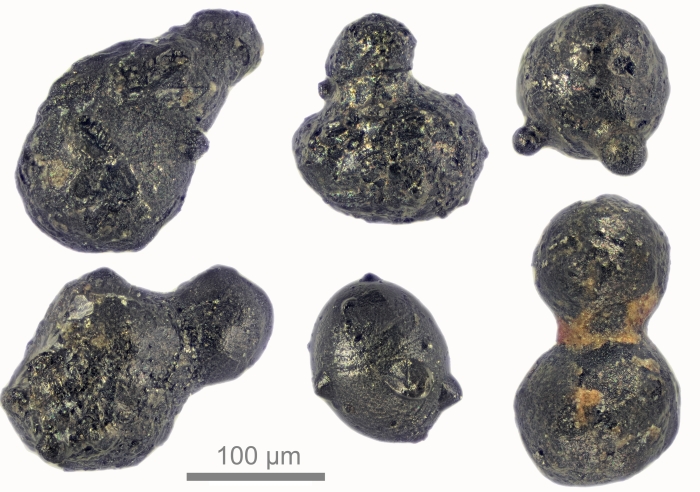Approximately 430,000 years ago, a meteorite exploded over Antarctica.
The only reason we know about it now is because scientists have just found tiny, once-molten particles of space rock that have been hidden away in the ice ever since.
Based on an analysis of those particles, the event was an unusual one - not quite powerful enough to produce an impact crater, but nor was it a lightweight. The jet of melted and vaporized material that blasted from the mid-air explosion would have been more hazardous than the Tunguska event that flattened a Siberian forest in 1908.
Although crater-producing impacts are fairly rare, rocks entering and exploding in Earth's atmosphere are not. They're called bolides, and NASA has logged 861 of them since 1988 at time of writing. Superbolides - those like the Chelyabinsk meteor in 2013, or the Kamchatka meteor in 2018 - occur a few times a century.
Airburst events more powerful than Tunguska are rarer still, but they're still thought to have been more common than impact cratering events throughout Earth's history. This is sobering, according to a team led by cosmochemist Matthias van Ginneken of the University of Kent, UK.
"While touchdown events may not threaten human activity if occurring over Antarctica," he said, "if it was to take place above a densely populated area, it would result in millions of casualties and severe damages over distances of up to hundreds of kilometers."
The problem is that, because these events don't tend to leave a crater, we have a hard time identifying them (heck, sometimes we even have a hard time identifying craters), so it's unclear just how common they are.
Cue 17 tiny particles, found on the summit of Walnumfjellet in the Sør Rondane Mountains of Queen Maud Land in East Antarctica. The largest of these bits is no bigger than half a millimeter across.
 Some of the spherules. (Scott Peterson/micro-meteorites.com)
Some of the spherules. (Scott Peterson/micro-meteorites.com)
They might look like pretty ordinary grains of dirt to the naked eye, but van Ginneken and his team subjected them to scanning electron microscopy, revealing that they are a kind of bolide product called condensation spherules.
The team's study revealed that the blobby spherules are composed mostly of iron and olivine, with a high nickel content - exactly consistent with a kind of rare meteorite known as a pallasite, confirming that the globlets originated off-world.
They were also low in oxygen-18, an isotope of oxygen that is found in lower concentrations in colder conditions, such as polar ice and water. When compared to condensation spherules found in other regions of Antarctica, previously dated to 480,000 and 430,000 years ago, the researchers found them surprisingly similar.
This similar chemical profile suggests the spherules were all created from the same meteoritic event, 430,000 years ago. It also contains clues as to the explosion itself.
According to the researchers, condensation spherules from a simple airburst are rare; they're usually found associated with cratering events. But the team could find no crater associated with their grains. In addition to the wide area across which they were scattered, this suggests the event that produced the spherules had to be an airburst - but one much more powerful than we usually see.
We're not 100 percent sure how meteors explode in the air, but scientists believe that high-pressure air in front of the falling meteor seeps into cracks in the rock, increasing internal pressure and causing the rock to break apart.
The heat associated with this process would have vaporized material in the meteorite; the explosion sent it blasting towards the ground. There, the vaporized material condensed again, mixing with the Antarctic ice sheet as it did so: thus the oxygen-18 profile of the spherules.
Because this event would have been even more powerful than Tunguska - an explosion of at least 3 megatons - the findings hint that such 'intermediate' meteor events have the potential to be devastating; even without an impact, the Tunguska event flattened 2,150 square kilometers (830 square miles) of forest, felling an estimated 80 million trees.
It therefore behooves us, the researchers said, to try and fill in the gaps in the superbolide record.
"To complete Earth's asteroid impact record, we recommend that future studies should focus on the identification of similar events on different targets, such as rocky or shallow oceanic basements, as the Antarctic ice sheet only covers 9 percent of Earth's land surface," van Ginneken said.
"Our research may also prove useful for the identification of these events in deep sea sediment cores and, if plume expansion reaches landmasses, the sedimentary record."
As if we didn't have enough to worry about…
The team's research has been published in Science Advances.
#Space | https://sciencespies.com/space/particles-of-a-meteor-explosion-from-430000-years-ago-found-hidden-in-antarctic-ice/
No comments:
Post a Comment